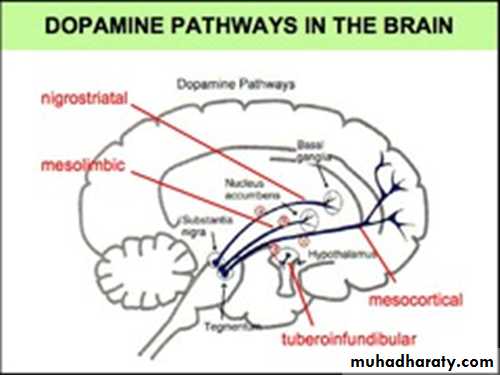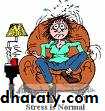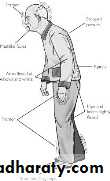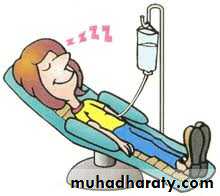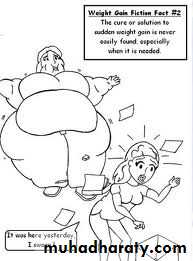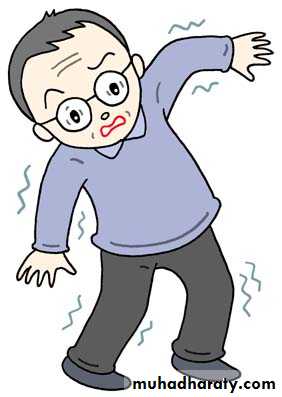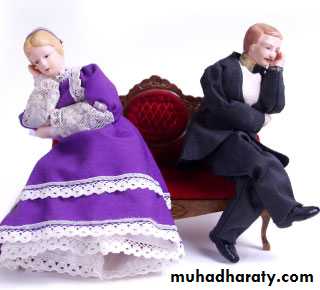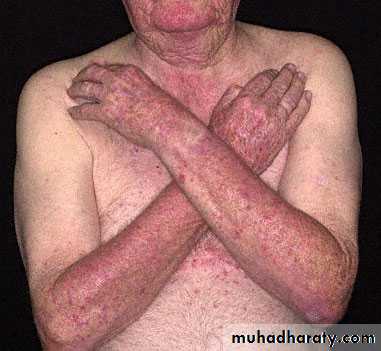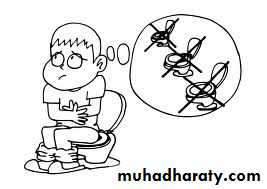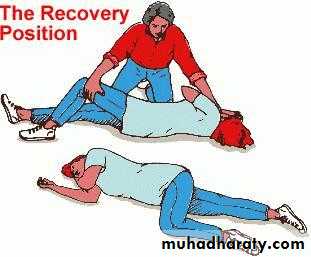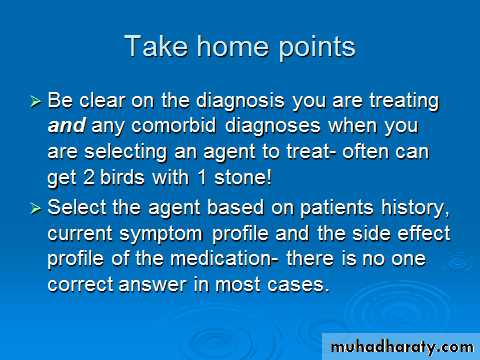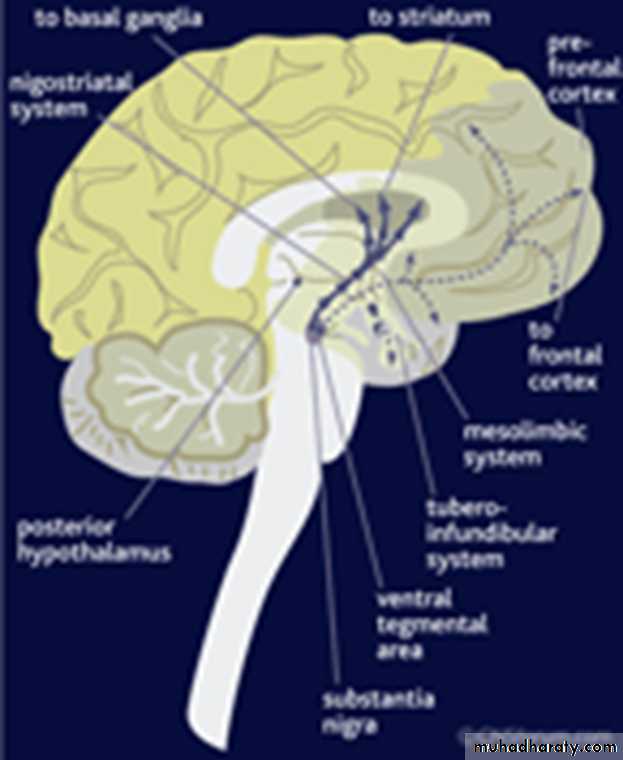Psychotropic drugs
Prof elham aljammas22/10/2013
objectives
Identify general pharmacologic strategiesDiscuss antidepressants including indications for use and side effects
Describe mood stabilizers including indications for use and side effects
Review antipsychotics including how to choose an antipsychotic and side effects
Identify anxiolytic classes and indications for use
Management strategies
-Adjust dosage for optimum benefit, safety and compliance.-Use adjunctive and combination therapies if needed however always strive for the simplest regimen.
-Keep your therapeutic endpoint in mind.
Psychotropic drugs
Treat mood, cognition, and behavioral disturbances associated with psychological disordersMost are not used recreationally or abused
Benzodiazepines are the exception
General classes of disorders
Mood
Anxiety
Psychotic
Other Disorders
Attention Deficit Disorder
Depression
Depression is a serious disorder that afflicts approximately 14 million adults in the United States each year. The lifetime prevalence rate of depression in the United States has been estimated to include 16 percent of adults (21 percent of women, 13 percent of men), or more than 32 million peopleAntidepressants
Indications:Unipolar and bipolar depression,
organic mood disorders,
schizoaffective disorder,
anxiety disorders including OCD, panic, social phobia, PTSD,
premenstrual dysphoric disorder
and impulsivity associated with personality disorders.
General guidelines
Antidepressant efficacy is similar so selection is based on past history of a response, side effect profile and coexisting medical conditions.There is a delay typically of 3-6 weeks after a therapeutic dose is achieved before symptoms improve.
If no improvement is seen after a trial of adequate length (at least 2 months) and adequate dose, either switch to another antidepressant or augment with another agent.
Mood disorders/Antidepressants
MAO Inhibitors
TricyclicsSelective Serotonin Reuptake Inhibitors
Dual Action Antidepressants
Selective Norepinephrine Reuptake Inhibitors
Atypical antidepressant
Mood Stabilizers (Antimanic Agents)
LithiumCarbonateValproic Acid
Carbamazepine
Lamotragine
Topirimate
MAOI
Use in late 1950s & ended in early 1960suse ended due to side effect (death)
MAO breaks down many chemicals including tyramine
Tyramine is present in cheeses, red wines, alcohol, smoked fish
MAO in liver breaks down tyramine
Causes a hypertensive crisis "cheese syndrome"
increased blood pressure ➔ stroke ➔ death
increased heart rate ➔ heart attack ➔ death
MAOI
Bind irreversibly to monoamine oxidase thereby preventing inactivation of biogenic amines such as norepinephrine, dopamine and serotonin leading to increased synaptic levels.
Are very effective for depression
Side effects include orthostatic hypotension, weight gain, dry mouth, sedation, sexual dysfunction and sleep disturbance
Hypertensive crisis can develop when MAOI’s are taken with tyramine-rich foods or sympathomimetics.
MAOI
Serotonin Syndrome can develop if take MAOI with meds that increase serotonin or have sympathomimetic actions. Serotonin syndrome sx include abdominal pain, diarrhea, sweats, tachycardia, HTN, myoclonus, irritability, delirium. Can lead to hyperpyrexia, cardiovascular shock and death.To avoid need to wait 2 weeks before switching from an SSRI to an MAOI. The exception of fluoxetine where need to wait 5 weeks because of long half-life.
SSRIs
Tricyclic antidepressants
Act as agonists to catecholaminesNo "cheese syndrome"
Side effects are the major problem
Cardiotoxic
Sedative action
Block acetylcholine system, especially muscarinic receptors
blurred vision, dry mouth, urinary retention, constipation, mental confusion
Block histamine receptors - sedation
prescaution
Very effective but potentially unacceptable side effect profile i.e. antihistaminic, anticholinergic, antiadrenergic
Lethal in overdose (even a one week supply can be lethal!)
Can cause QT lengthening even at a therapeutic serum level
TCA
Have tertiary amine side chains
Side chains are prone to cross react with other types of receptors which leads to more side effects including antihistaminic (sedation and weight gain), anticholinergic (dry mouth, dry eyes, constipation, memory deficits and potentially delirium), antiadrenergic (orthostatic hypotension, sedation, sexual dysfunction)
Act predominantly on serotonin receptors
Examples:Imipramine, amitriptyline, doxepin, clomipramine
SSRI
Selectively block re-uptake of 5-HTWork on DA and NE as well but very little
Eliminate ACh and antihistamine effects
No more effective than MAOIs or tricyclics
Better because there are fewer side effects
On market since late 1980s & early 1990s
Fluoxetine – Prozac
Sertraline - Zoloft
Paroxetine - Paxil
Fluvoxamine - Luvo
Citalopram - Celexa
Escitalopram - Lexapro
SSRI
Selectively block re-uptake of 5-HT
Work on DA and NE as well but very little
Eliminate ACh and antihistamine effects
No more effective than MAOIs or tricyclics
Better because there are fewer side effects
On market since late 1980s & early 1990s
Fluoxetine – Prozac
Sertraline - Zoloft
Paroxetine - Paxil
Fluvoxamine - Luvo
Citalopram - Celexa
Escitalopram - Lexapro
Selective serotonin reuptake inhibitors
Block the presynaptic serotonin reuptakeTreat both anxiety and depressive
Most common side effects include GI upset, sexual dysfunction (30%+!), anxiety, restlessness, nervousness, insomnia, fatigue or sedation, dizziness
Very little risk of cardiotoxicity in overdose
Can develop a discontinuation syndrome with agitation, nausea, disequilibrium and dysphoria
SNRI
Selectively inhibits NE transporter.
Blocks re-uptake.
Atomoxetine (Strattera)
Reboxetine (Edronax, Vestra)
Dual action AD
Affinity for both 5-HT and NE.
Block re-uptake for both
In this sense, like TCAs
Duloxetine - Cymbalta
Atypical Antidepressants
The atypical antidepressants are a mixed group of agents that have actions at several different sites. This group includes bupropion, mirtazapine
,nefazodone], and
trazodone
atypical antidepressants
Bupropion (Wellbutrin)No effect on either 5-HT or NE
Effective at blocking DA reuptake
May be similar action to cocaine
Lowers seizure threshold
Venlafaxine (Effexor)
5-HT, DA and NE reuptake blocker
Drugs for bipolar
Treat the manic phases of Bipolar Disorder
Lithium
Valproic Acid
Carbamazepine/OxcarbazepineLamotragine
Topirimate
Symbyax – Combo of olanzepine and fluoxetine (Zyprexa & Prozac)
Mood StabilizersIndications: Bipolar, cyclothymia, schizoaffective, impulse control and intermittent explosive disorders.
Classes: Lithium, anticonvulsants, antipsychotics
Which you select depends on what you are treating and again the side effect profile.
lithium
Only medication to reduce suicide rate.Rate of completed suicide in BAD ~15%
Effective in long-term prophylaxis of both mania and depressive episodes in 70+% of BAD I pts
Factors predicting positive response to lithium
Prior long-term response or family member with good response
Classic pure mania
Mania is followed by depression
LITHIUM
Before starting :Get baseline creatinine, TSH and CBC. In women check a pregnancy test- during the first trimester is associated with Ebstein’s anomaly 1/1000 (20X greater risk than the general population)
Monitoring: Steady state achieved after 5 days- check 12 hours after last dose. Once stable check q 3 months and TSH and creatinine q 6 months.
Goal: blood level between 0.6-1.2mmol /lit
Lithium side effects
Most common are GI distress including reduced appetite, nausea/vomiting, diarrheaThyroid abnormalities
Non significant leukocytosis
Polyuria/polydypsia secondary to ADH antagonism. In a small number of patients can cause interstitial renal fibrosis.
Hair loss, acne
Reduces seizure threshold, cognitive slowing, intention tremor
Lithium toxicity
Mild- levels 1.5-2.0 see vomiting, diarrhea, ataxia, dizziness, slurred speech, nystagmus.Moderate-2.0-2.5 nausea, vomiting, anorexia, blurred vision, clonic limb movements, convulsions, delirium, syncope
Severe- >2.5 generalized convulsions, oliguria and renal failure
Study Questions
Choose the ONE best answer.12.1 A 55-year-old teacher began to experience changes in mood. He was losing interest in his work and lacked the desire to play his daily tennis match. He was preoccupied with feelings of guilt, worthlessness, and hopelessness. In addition to the psychiatric symptoms, the patient complained of muscle aches throughout his body. Physical and laboratory tests were unremarkable. After 6 weeks of therapy with fluoxetine, the patient's symptoms resolved. However, the patient complains of sexual dysfunction. Which of the following drugs might be useful in this patient?
A. Fluvoxamine.
B. Sertraline.
C. Citalopram.
D. Mirtazapine.
E. Lithium.
Correct answer = D. Sexual dysfunction commonly occurs with TCAs, SSRIs, and SNRIs. Mirtazapine is largely free from sexual side effects.
A 25-year-old woman has a long history of depressive symptoms accompanied by body aches. Physical and laboratory tests are unremarkable. Which of the following drugs might be useful in this patient?
A. Fluoxetine.
B. Sertraline.
C. Phenelzine.
D. Mirtazapine.
E. Duloxetine.
Correct answer = E. Duloxetine is an SNRI that can be used for depression accompanied by neuropathic pain. MAOs and SSRIs have little activity against neuropathic pain
A 51-year-old woman with symptoms of major depression also has narrow-angle glaucoma. Which of the following antidepressants should be avoided in this patient?
A. Amitriptyline.
B. Sertraline.
C. Bupropion.
D. Mirtazepine.
E. Fluvoxamine.
Correct answer = A. Because of its potent antimuscarinic activity, amitriptyline should not be given to patients with glaucoma because of the risk of acute increases in ocular pressure. The other antidepressants all lack antagonist activity at the muscarinic receptor.
A 36-year-old man presents with symptoms of compulsive behavior. If anything is out of order, he feels that “work will not be accomplished effectively or efficiently.†He realizes that his behavior is interfering with his ability to accomplish his daily tasks but cannot seem to stop himself. Which of the following drugs would be most helpful to this patient?
A. Imipramine.
B. Fluvoxamine.
C. Amitriptyline.
D. Tranylcypromine.
E. Lithium.
Correct answer = B. Selective serotonin reuptake inhibitors are particularly effective in treating obsessive-compulsive disorder; flu vox amine is approved for this condition. The other drugs are ineffective in the treatment of obsessive-compulsive disorder.
Neurolepticsprof Dr Elham Aljammas23/10/2013
Antipsychotics used to treat schizophrenia.Schizophrenia is a severe chronic disorder
Positive symptoms: hallucinations, and delusions
Negative symptoms: amotivation, poverty of speech, flat affect
Disorganized symptoms: speech, thought, and behavior
Now being used to treat Bipolar as well
Antipsychotics
Indications for use:schizophrenia, schizoaffective disorder, bipolar disorder- for mood stabilization and/or when psychotic features are present, delirium,
psychotic depression,
dementia,
trichotillomania, augmenting agent in treatment resistant anxiety disorders.
Pathways affected by DA in the Brain
Antagonize dopamine – block a specific receptor
AtypicalRisperdal - Risperidone
Olanzepine - Zyprexia
Quetiapine - Seroquel
Ziprasidone – Geodon
Aripiprazole – Abilify
Paliperidone – Invega
Typical
ChlorpromazineTrifluperazine Thorazine
Haloperidol – (Haldol)
The Atypical Antipsychotics
- atypical agents are serotonin-dopamine 2 antagonists (SDAs)They are considered atypical in the way they affect dopamine and serotonin neurotransmission in the four key dopamine pathways in the brain.
Antipsychotics drugs(typical)
Usual dosedrug
group
100-1500mg daily
chlorpromazine
phenothiazines
5-30mg daily
50-100mg IMI monthly
5mg IMI orIVI on need
haloperidol
butyrophenones
40-200mg fortnight
Short & long acting
flupentixol
thioxanthenes
4-30mg daily
1,5,10mg orally
Pimozide
stelazine
Diphenylbutylpiperidines
Trifluperazine
600-1800mg daily
25 mg IMI monthly
Sulpiride
Modecate
Substituated benzamides
Fluphenazine decanoate
Neuroleptics
. The traditional or typicalneuroleptic drugs (also called conventional or first-generation antipsychotics) are competitive inhibitors at a variety of receptors, but their antipsychotic effects reflect competitive blocking of dopamine receptors. These drugs vary in potency. For example, chlorpromazine is a low-potency drug, and fluphenazine is a high-potency agent No one drug is clinically more effective than another.
Atypical antipsychotic agent
Usual dosedrugs
group
25-900mg daily
clozapine
dibenzodiazepine
2-16mg daily
100-200mg/d
Risperidone
SeroquelBezisoxazole
Quetiapine -5-20mg daily
olanzapinethienobenzodiazepine
Atypical
the newer antipsychotic drugs
are referred to as atypical (or second-generation antipsychotics), because they have fewer extrapyramidal adverse effects than the older, traditional agents. These drugs appear to owe their unique activity to blockade of both serotonin and dopamine (and, perhaps, other) receptors. Current antipsychotic therapy commonly employs the use of the atypical agents to minimize the risk of debilitating movement disorders associated with the typical drugs that act primarily at the D2 dopamine receptor. All of the atypical antipsychotics exhibit an efficacy that is equivalent to, or occasionally exceeds, that of the typical neuroleptic agents.
Mechanism of action
Dopamine receptor blocking activity in the brain:. D1 and D5 receptors activate adenylyl cyclase, often exciting neurons, whereas D2, D3 and D4 receptors inhibit adenylyl cyclase, or mediate membrane K+ channel opening leading to neuronal hyperpolarization. The neuroleptic drugs bind to these receptors to varying degrees. However, the clinical efficacy of the typical neuroleptic drugs correlates closely with their relative ability to block D2 receptors in the mesolimbic system of the brain. atypical drug clozapine has higher affinity for the D4 receptor and lower affinity for the D2 receptor, which may partially explain its minimal ability to cause extrapyramidal side effects (EPS).Serotonin receptor blocking activity in the brain: Most of the newer atypical agents appear to exert part of their unique action through inhibition of serotonin receptors (5-HT), particularly 5-HT2A receptors. (clozapine ,olanzapine,aripiprazole , Quetiapine ).
The undesirable side effects of these agents, however, are often a result of actions at these other receptors.
Antipsychotic actions: All of the neuroleptic drugs can reduce the hallucinations and delusions associated with schizophrenia by blocking dopamine receptors in the mesolimbic system of the brain. The antipsychotic effects usually take several days to weeks to occur, suggesting that the therapeutic effects are related to secondary changes in the corticostriatal pathways.
Extrapyramidal effects: Dystonias (sustained contraction of muscles leading to twisting distorted postures), parkinson-like symptoms, akathisia (motor restlessness), and tardive dyskinesia (involuntary movements of the tongue, lips, neck, trunk, and limbs) occur with chronic treatment. Blocking of dopamine receptors in the nigrostriatal pathway probably causes these unwanted movement symptoms. The atypical neuroleptics exhibit a lower incidence of these symptoms.
Antiemetic effects: With the exceptions of aripiprazole and thioridazine , most of the neuroleptic drugs have antiemetic effects that are mediated by blocking D2-dopaminergic receptors of the chemoreceptor trigger zone of the medulla.
Antimuscarinic effects: Some of the neuroleptics, particularly thioridazine, chlorpromazine, clozapine, and olanzapine ,produce anticholinergic effects, including blurred vision dry mouth (exception: clozapine increase salivation), confusion, and inhibition of gastrointestinal and urinary tract smooth muscle, leading to constipation and urinary retention. This anticholinergic property may actually assist in reducing the risk of EPS with these agents.
Important side effects to be considered when choosing antipsychotic drugs
1-Extrapyramidial side effects:Atypical antipsychotic has less extrapyramidal effect.
2-hyperprolactinaemia: Lead to menstrual disturbances,increased risk of malignancy,increased galactorrhea,& increased osteoporosis.
Prolactine sparingis aripiprazole
3-sedationIncreased sedation with high affinity to histamine& muscarinic receptors
• CPZ,olanzapine,clozapine
Helpful in acute state
4-weight gain:
Histamine & 5HT R block(>olanzapine)less with resperidone,amisulpride,&aripipraz 5.Type 11 DM
>clozapine &olanzapine
Should be monitored by Bd sugar,lipid profile& weight.
6-CV& cerbrovascular events ,
through their effect on thelipid profile ,Wt,& insulin
resistance. Some produce prolonge QT interval.
olanzapine& resperidone
7-postural hypotension
8-sexual dysfunction
9-photosensitivity10-agranulocytosis
11-constipation12-reduction of fit threshold
Other effects: Blockade of -adrenergic receptors causes orthostatic hypotension and light-headedness. The neuroleptics also alter temperature-regulating mechanisms and can produce poikilothermia (body temperature varies with the environment). In the pituitary, neuroleptics block D2 receptors, leading to an increase in prolactin release. Atypical neuroleptics are less likely to produce prolactin elevations. Sedation occurs with those drugs that are potent antagonists of the H1-histamine receptor, including chlorpromazine, olanzapine, quetiapine, and clozapine. Sexual dysfunction may also occur with the antipsychotics due to various receptor-binding characteristics.
Therapeutic uses
Treatment of schizophrenia:The neuroleptics are considered to be the only efficacious treatment for schizophrenia.
Prevention of severe nausea and vomiting: The older neuroleptics (most commonly prochlorperazine) are useful in the treatment of drug-induced nausea
Other uses: The neuroleptic drugs can be used as tranquilizers to manage agitated and disruptive behavior secondary to other disorders.
Neuroleptics are used in combination with narcotic analgesics for treatment of chronic pain with severe anxiety
. Chlorpromazine is used to treat intractable hiccups.
Promethazine, this agent is used in treating pruritus .
Pimozide is primarily indicated for treatment of the motor and phonic tics of Tourette's disorder. risperidone and haloperidol are also commonly prescribed for this tic disorder.
Also, risperidone is now approved for the management of disruptive behavior and irritability secondary to autism
Antipsychotic adverse effect
Tardive Dyskinesia (TD)-involuntary muscle movements that may not resolve with drug discontinuation- risk approx. 5% per yearNeuroleptic Malignant Syndrome (NMS): Characterized by severe muscle rigidity, fever, altered mental status, autonomic instability, elevated WBC, CPK and lfts. Potentially fatal.
Extrapyramidal side effects (EPS): Acute dystonia, Parkinson syndrome, Akathisia
Adverse effects
. Parkinson-like symptoms of bradykinesia, rigidity, and tremor usually occur within weeks to months of initiating treatment. Clozapine can produce bone marrow suppression, seizures, and cardiovascular side effects. The risk of severe agranulocytosis necessitates frequent monitoring of white-blood-cell counts. The neuroleptics depress the hypothalamus, affecting thermoregulation, and causing amenorrhea, galactorrhea, gynecomastia, infertility, and impotence. Significant weight gain is often a reason for noncompliance. It is also recommended that glucose and lipid profiles be monitored in patients taking antipsychotics
The choice of medication &dose :depend on
1-sevirety of the problems.2-degree of sedation required.
3-side effect profile.
4-preferance of individual clinician.
Study Questions
Choose the ONE best answer.13.1 An adolescent male is newly diagnosed with schizophrenia. Which of the following neuroleptic agents may improve his apathy and blunted affect?
A. Chlorpromazine.
B. Fluphenazine.
C. Haloperidol.
D. Risperidone.
E. Thioridazine
Correct answer = D. Risperidone is the only neuroleptic on the list that has some benefit in improving the negative symptoms of schizophrenia. All the agents have the potential to diminish the hallucinations and delusional thought processes.
Which one of the following neuroleptics has been shown to be a partial agonist at the D2 receptor?
A. Aripiprazole.
B. Clozapine.
C. Haloperidol.
D. Risperidone.
E. Thioridazine.
Correct answer = A. Aripiprazole is the agent that acts as a partial agonist at D2 receptors. Theoretically, the drug would enhance action at these receptors when there is a low concentration of dopamine and would block the actions of high concentrations of dopamine. All the other drugs are only antagonistic at D2 receptors, with haloperidol being particularly potent.
A 21-year-old male has recently begun pimozide therapy for Tourette's disorder. He is brought to the emergency department by his parents. They describe that he has been having “different-appearing tics†than before, such as prolonged contraction of the facial muscles. While being examined, he experiences opisthotonus (spasm of the body where the head and heels are bent backward and the body is bowed forward. A type of extrapyramidal effect). Which of the following drugs would be beneficial in reducing these symptoms?
A. Benztropine.
B. Bromocriptine.
C. Lithium.
D. Prochlorperazine.
E. Risperidone
Correct answer = A. The patient is experiencing extrapyramidal symptoms due to pimozide, and a muscarinic antagonist such as benztropine would be effective in reducing the symptoms. The other drugs would have no effect or, in the case of prochlorperazine, might increase the symptoms.
A 28-year-old woman with schizoid affective disorder and difficulty sleeping would be most benefited by which of the following drugs?
A. Aripiprazole.
B. Chlorpromazine.
C. Haloperidol.
D. Risperidone.
E. Ziprasidone.
Correct answer = B. Chlorpromazine has significant sedative activity as well as antipsychotic properties. Of the choices, it is the drug most likely to alleviate this patient's major complaints, including her insomnia
Prof. Dr Elham Aljammas
AnxiolyticAnxiolytic
Treat anxiety disordersGeneralized Anxiety Disorder
Panic Disorder
PTSD
OCD
Social Anxiety Disorder (SAD)
Anxiolytic
Used to treat many diagnoses including panic disorder,generalized Anxiety disorder,
substance-related disorders and their withdrawal,
insomnias and parasomnias.
In anxiety disorders often use anxiolytics in combination with SSRIS or SNRIs for treatment.
Benzodiazepines
Used to treat insomnia, parasomnias and anxiety disorders.
Often used for CNS depressant withdrawal protocols ex. ETOH withdrawal.
Side effects/cons
Somnolence
Cognitive deficits
Amnesia
Disinhibition
Tolerance
Dependence
• Drug
• Dose Equivalency (mg)• Peak BloodLevel (hours)
• Elimination Half-Life1 (hours)
• Comments
• Alprazolam (Xanax)
• 0.5
• 1-2
• 12-15
• Rapid oral absorption
• Chlordiazepoxide (Librium)
• 10.0
• 2-4
• 15-40
• Active metabolites; erratic bioavailability from IM injection
• Clonazepam (Klonopin)
• 0.25
• 1-4
• 18-50
• Can have layering effect
• Diazepam (Valium)
• 5.0
• 1-2
• 20-80
• Active metabolites; erratic bioavailability from IM injection
• Flurazepam (Dalmane)
• 30.0
• 1-2
• 40-100
• Active metabolites with long half-lives
• Lorazepam (Ativan)
• 1.0
• 1-6
• 10-20
• No active metabolites
• Oxazepam (Serax)
• 15.0
• 2-4
• 10-20
• No active metabolites
• Temazepam (Restoril)
• 30.0
• 2-3
• 10-40
• Slow oral absorption
• Triazolam (Halcion)
• 0.25
• 1
• 2-3
• Rapid onset; short duration of action
Take home points
Monitor for efficacy and tolerance and adjust as indicated.If the patient does not improve step back, rethink your diagnosis and treatment plan!
Keep an eye on drug interactions
Benzodiazepines
Facilitate GABA neurotransmissionBind to a particular site on the GABA receptor
Xanax, Ativan, Valium, Serax, Librium
Beta-Blockers
Antagonize NE by blocking Beta receptor subtype
SSRIs
PTSD, OCD, SAD, and to some degree GAD
Others
Buspar
Non-sedating
Does not interact with alcohol
Not highly effective
ADD
Methylphenidate – Ritalin
DA reuptake inhibitor
So slowly it enters the brain that it is not addictive like cocaine even though they have the same mechanism
Concerta (Immediate release combined with time release)
Adderal (mixed amphetamine salts)
Has extended release
Modafinil – Provigil
Vyvanse
An amphetamine pro-drug
Less abusable
Straterra
Mixing Med.
Although classified as a certain type of drug most psych meds used for many different disorders.Antipsychotics in Bipolar Disorder
Abilify
Zyprexa
Mood stabilizers in alcoholism
Topiramate
Prescribing a medication for a disorder when it is known to work, but there is no formal FDA indication is called “off-label prescribing”
It’s perfectly legal and quite common
Electroconvulsive therapy
Prof.Dr.Elham Aljammas
Electrical stimulus..Voltage =200V approximatly
1933 – Manfred Џakel •developѕ іnѕulіne coma therapy (Insulin-shock)accompanied by seizure
History of Convulsive Therapies
1934 – Ladіѕlaѕ Meduna • іnduceѕ ѕeіzureѕ using SC camphor in oil initially and later, IV
Metrazol (pentylenetetrazol,pentamethylenetetrazol):
• Tx was based upon a theory of opposition beween epilepsy and schizophrenia.
• Frequency30 - 70Hz• Pulsewidth 0.5 - 2 msec- 8 sec
• Charge 25 - 504mC (5 - 99J)
History of Convulsive Therapies
1938 – Ugo Cerlettі and Lucіo Bіnі • іnduce ѕeіzureѕ іnRome using electrical stimuli
• 1940 – Renato Almanѕі and Davіd Іmpaѕto
administer ECT at Columbus Hospital in NYC.
Lothar Kalinowsky starts giving ECT at Psychiatric
Institute
• 1940 - A.E. Bennett uses curare for muscle relaxation
with Metrazol convulsive therapy
• 1952 – Holmberg uѕeѕ succinylcholine as a muscle
relaxant with ECT
Modern (Modified) ECT
16
• General anesthesia (propofol 1mg/kg, etomidate
0.15mg/kg, methohexital 1mg/kg))
• Muscle relaxant (succinylcholine 1mg/kg,
mivacurium 0.15mg/kg))
• Anticholinergic (glycopyrrolate 0.2mg, atropine
0.4mg)
• Oxygen/ventilation by mask
• Continuous cardiac and EEG monitoring
• (Other preand
poѕtmedіcatіonѕ
aѕ іndіcated – NTG,
Beta-blockers, promethazine, ketorolac, midazolam,
sumatriptan, sodium amytal)
ECT Machine
Indications for ECT• Treatment-refractory conditions
• Severe or life-threatening psychiatric illness(Scizophrenia,Mania,Severe depressive illness
• Most often used for the treatment of
medication-resistant depression (MDD)
Reasons to consider ECT first
• Severe sucidality• Catatonia/NMS
• Patient preference (usually previous ECT)
• Pregnancy and severe psychiatric illness
Risks/Side Effects
• Common: transient confusion, headache,nausea, myalgia, retrograde and anterograde
amnesia
• Uncommon: cardiac arrest, unstable
arrhythmias, ischemia, severe hypertension
or hypotension, stroke, prolonged apnea,
aspiration, laryngospasm, prolonged
seizures (status), fractures, malignant
hyperthermia
• Death: 1:80,000 Txs (1:10,000 patients)
Conditions of increased risk
• Increased ICP (mass)
• Unstable angina
• Recent MI
• Recent stroke
• Pheochromocytoma
• Retinal detachment
Medications and ECT
• Anticonvulsants - taper and d/c or reduce(except in the case of seizure disorder)
• Stimulants - taper and d/c
• D/C Lithium 36-48 hrs prior to Tx
• Trazodone -d/c
• Otherѕ (, TCA’ѕ, MAOІ'ѕ, antіPD
) consider
dose reduction or d/c
• Neuroleptics - may be synergistic
• Reserpine, chlopromazine - adverse effects
Consent
• Informed consent - adequate mentalcapacity, understand procedure, risks, side
effects, benefits, alternatives
• Printed consent form
Electrode Placement
• Bilateral (BL) - most common, most effective,
most cognitive dysfunction
• Right unilateral (RUL) - less cognitive effect,
may be less clinically effective
• Bіfrontal (BF) – may be aѕ effectіve aѕ BL
with less cognitive effect
Application of electrodes
Bilateral RUL BifrontalRasmussen KG et al. Mayo Clin Proc. 2002:77:552-556
Course of ECT
• Index course 6 - 8 Txs• 2 -5 Txs per week
• Tx until improvement plateaus
• Continuation/Maintenance ECT
• Prophylactic medication
PSYCHOTHERAPY
psychotherapy
Psychotherapy is the talking cure ,the attempt to alter abnormal thinking and behaviour by a dialogue taking place within a relationship.
Psychotherapeutic methods are used both to conceptualise abnormal mental states (to understand why symptoms have developed in this patient at this particular time) and to treat the attendant disorders.
There are a variety of different psychotherapeutic methods, each usually initially associated with a single individual or centre. In its broadest sense of achieving understanding of symptoms and effecting their improvement by means of a therapeutic relationship
Types of psychotherapy
Supportive psychotherapy Aims to offer practical and emotional support, opportunity for ventilation of emotions, and guided, problem-solving discussionExploratory psychotherapy Aims to effect change in the individual's abnormal thinking and behaviour by exploration of underlying causes.
Dynamic therapies Based on psychoanalytic theory. Focus of clinical attention is childhood experience and exploration of the unconscious mind.
Cognitive/behavioural therapies Based on learning theory and cognitive theory. Focus of clinical attention is the here and now current behaviours and thoughts, and their modification
Selection of psychotheraputic methods
Local availabilityPractitioner experience.
Illness factors
Patient choice
Behaviour therapy
Techniques based on learning theory are utilised in order to extinguish maladaptive behaviours and substitute adaptive ones.egSystematic desensitisation
Flooding/implosive therapy
Thank You



